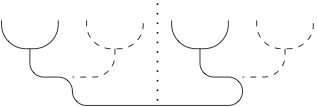|
| Current & recent teaching |
EE 520 Intro. to quantum information processing (2016) | EE 512 Stochastic processes (2014) |
| EE 599 Quantum algorithms (2012) | CS 798 Adv. topics in quantum fault tolerance (2010) | |
| QIC 710 Intro. to quantum information processing (2010) | EE 441 Linear algebra (2013) | |
| EE 364 Probability theory (2015) | CS 360 Intro. to the theory of computation (2011) | |
| Publications |
|
|
||||
|
|
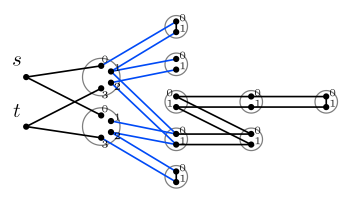 |
Span programs and quantum algorithms for st-connectivity and claw detection
A. Belovs, B. Reichardt. arXiv:1203.2603 [quant-ph], 2012. European Symp. on Algorithms (ESA) 2012, LNCS vol. 7501, pp. 193-204. slides We introduce a span program that decides st-connectivity, and generalize the span program to develop quantum algorithms for several graph problems. First, we give an algorithm for st-connectivity that uses O(n d^{1/2}) quantum queries to the n x n adjacency matrix to decide if vertices s and t are connected, under the promise that they either are connected by a path of length at most d, or are disconnected. We also show that if T is a path, a star with two subdivided legs, or a subdivision of a claw, its presence as a subgraph in the input graph G can be detected with O(n) quantum queries to the adjacency matrix. Under the promise that G either contains T as a subgraph or does not contain T as a minor, we give O(n)-query quantum algorithms for detecting T either a triangle or a subdivision of a star. All these algorithms can be implemented time efficiently and, except for the triangle-detection algorithm, in logarithmic space. One of the main techniques is to modify the st-connectivity span program to drop along the way "breadcrumbs," which must be retrieved before the path from s is allowed to enter t. |
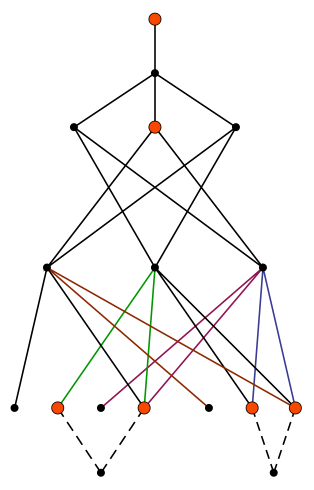 |
Quantum query complexity of state conversion
T. Lee, R. Mittal, B. Reichardt, R. Spalek, M. Szegedy. Proc. FOCS 2011, arXiv:1011.3020 [quant-ph]. State conversion generalizes query complexity to the problem of converting between two input-dependent quantum states by making queries to the input. We characterize the complexity of this problem by introducing a natural information-theoretic norm that extends the Schur product operator norm. The complexity of converting between two systems of states is given by the distance between them, as measured by this norm. In the special case of function evaluation, the norm is closely related to the general adversary bound, a semi-definite program that lower-bounds the number of input queries needed by a quantum algorithm to evaluate a function. We thus obtain that the general adversary bound characterizes the quantum query complexity of any function whatsoever. This generalizes and simplifies the proof of the same result in the case of boolean input and output. Also in the case of function evaluation, we show that our norm satisfies a remarkable composition property, implying that the quantum query complexity of the composition of two functions is at most the product of the query complexities of the functions, up to a constant. Finally, our result implies that discrete and continuous-time query models are equivalent in the bounded-error setting, even for the general state-conversion problem. |
 |
Reflections for quantum query complexity: The general adversary bound is tight for every boolean function
B. Reichardt. Proc. SODA 2011, arXiv:1005.1601 [quant-ph]. slides We show that any boolean function can be evaluated optimally by a bounded-error quantum query algorithm that alternates a certain fixed, input-independent reflection with coherent queries to the input bits (a second reflection). Originally introduced for the unstructured search problem, this two-reflections paradigm is therefore a universal feature of quantum algorithms.
|
Span programs and quantum query algorithms
B. Reichardt. ECCC TR10-110, 2010. Quantum query complexity measures the number of input bits that must be read by a quantum algorithm in order to evaluate a function. Hoyer et al. (2007) have generalized the adversary semi-definite program that lower-bounds quantum query complexity. By giving a matching algorithm, we show that the general adversary lower bound is tight for every boolean function.
|
Least span program witness size equals the general adversary lower bound on quantum query complexity
B. Reichardt. ECCC TR10-075, 2010. Span programs form a linear-algebraic model of computation, with span program ``size" used in proving classical lower bounds. Quantum query complexity is a coherent generalization, for quantum algorithms, of classical decision-tree complexity. It is bounded below by a semi-definite program (SDP) known as the general adversary bound. We connect these classical and quantum models by proving that for any boolean function, the optimal ``witness size" of a span program for that function coincides exactly with the general adversary bound. |
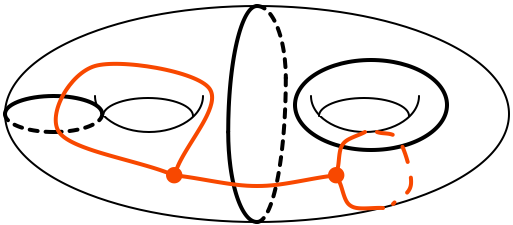 |
Estimating Turaev-Viro three-manifold invariants is universal for quantum computation
G. Alagic, S. Jordan, R. Koenig, B. Reichardt. Phys. Rev. A 82(4):040302, 2010 paper arXiv:1003.0923 [quant-ph], 2010. The Turaev-Viro invariants are scalar topological invariants of compact, orientable 3-manifolds. We give a quantum algorithm for additively approximating Turaev-Viro invariants of a manifold presented by a Heegaard splitting. The algorithm is motivated by the relationship between topological quantum computers and (2+1)-dimensional topological quantum field theories. Its accuracy is shown to be nontrivial, as the same algorithm, after efficient classical preprocessing, can solve any problem efficiently decidable by a quantum computer. Thus approximating certain Turaev-Viro invariants of manifolds presented by Heegaard splittings is a universal problem for quantum computation. This establishes a relation between the task of distinguishing nonhomeomorphic 3-manifolds and the power of a general quantum computer. |
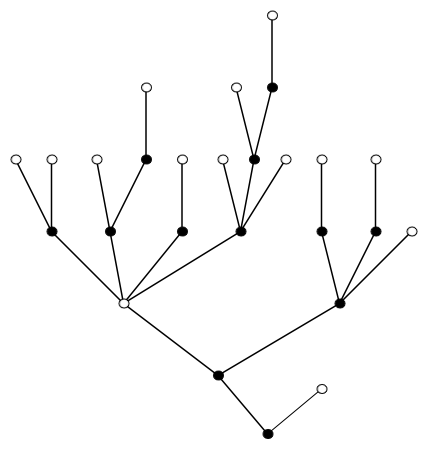 |
Any NAND formula of size N can be evaluated in time N1/2+o(1) on a quantum computer
A. Ambainis, A. Childs, B. Reichardt, R. Špalek, S. Zhang. FOCS'07 special issue of SIAM J. Computing 39(6):2513-2530, 2010, quant-ph/0703015. slides For every NAND formula of size N, there is a bounded-error N^{1/2+o(1)}-time quantum algorithm, based on a coined quantum walk, that evaluates this formula on a black-box input. Balanced, or ``approximately balanced,'' NAND formulas can be evaluated in O(sqrt{N}) queries, which is optimal. It follows that the (2-o(1))-th power of the quantum query complexity is a lower bound on the formula size, almost solving in the positive an open problem posed by Laplante, Lee and Szegedy. |
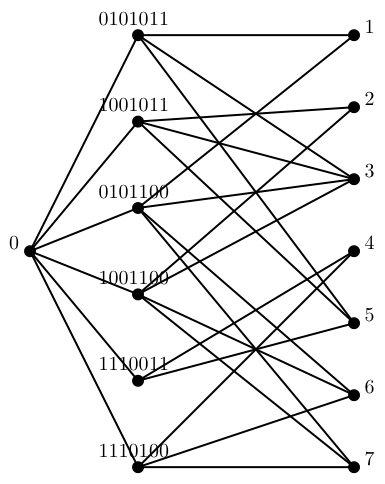 |
Faster quantum algorithm for evaluating game trees
B. Reichardt. Proc. SODA 2011, quant-ph/0907.1623. slides
We give an O(sqrt n log n)-query quantum algorithm for evaluating size-n AND-OR formulas. Its running time is poly-logarithmically greater after efficient preprocessing. Unlike previous approaches, the algorithm is based on a quantum walk on a graph that is not a tree. Instead, the algorithm is based on a hybrid of direct-sum span program composition, which generates tree-like graphs, and a novel tensor-product span program composition method, which generates graphs with vertices corresponding to minimal zero-certificates.
|
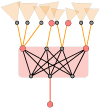 |
Span-program-based quantum algorithm for evaluating unbalanced formulas
B. Reichardt. TQC 2011, quant-ph/0907.1622, 2009. slides
The formula-evaluation problem is defined recursively. A formula's evaluation is the evaluation of a gate, the inputs of which are themselves independent formulas. Despite this pure recursive structure, the problem is combinatorially difficult for classical computers.
|
 |
Span programs and quantum query complexity: The general adversary bound is nearly tight for every boolean function
B. Reichardt. Proc. FOCS 2009, Extended abstract, Full version: quant-ph/0904.2759, 2009. slides
The general adversary bound is a semi-definite program (SDP) that lower-bounds the quantum query complexity of a function. We turn this lower bound into an upper bound, by giving a quantum walk algorithm based on the dual SDP that has query complexity at most the general adversary bound, up to a logarithmic factor.
|
 |
Span-program-based quantum algorithm for evaluating formulas
B. Reichardt, R. Špalek. quant-ph/0710.2630, 2007, Proc. STOC'08. slides
We give a quantum algorithm for evaluating formulas over an extended gate set, including all two- and three-bit binary gates
(e.g., NAND, 3-majority). The algorithm is optimal on read-once formulas for which each gate's inputs are balanced in a certain sense. |
| The quantum adiabatic optimization algorithm and local minima. Correction B. Reichardt. STOC 2004. |
 |
Fault-tolerant quantum computation with few qubits
R. Chao, B. Reichardt. arXiv:1705.05365 [quant-ph], 2017. Reliable qubits are difficult to engineer, but standard fault-tolerance schemes use seven or more physical qubits to encode each logical qubit, with still more qubits required for error correction. The large overhead makes it hard to experiment with fault-tolerance schemes with multiple encoded qubits.
|
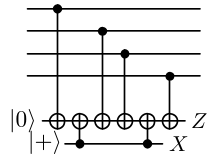 |
Quantum error correction with only two extra qubits
R. Chao, B. Reichardt. arXiv:1705.02329 [quant-ph], 2017. Noise rates in quantum computing experiments have dropped dramatically, but reliable qubits remain precious. Fault-tolerance schemes with minimal qubit overhead are therefore essential. We introduce fault-tolerant error-correction procedures that use only two ancilla qubits. The procedures are based on adding "flags" to catch the faults that can lead to correlated errors on the data. They work for various distance-three codes.
|
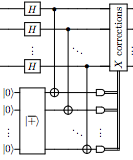 |
Universal fault-tolerant quantum computation with only transversal gates and error correction
A. Paetznick, B. Reichardt. Physical Review Letters 111:090505, 2013, arXiv:1304.3709 [quant-ph]. Transversal implementations of encoded unitary gates are highly desirable for fault-tolerant quantum computation. Though transversal gates alone cannot be computationally universal, they can be combined with specially distilled resource states in order to achieve universality. We show that "triorthogonal" stabilizer codes, introduced for state distillation by Bravyi and Haah [Phys. Rev. A 86, 052329 (2012)], admit transversal implementation of the controlled-controlled-Z gate. We then construct a universal set of fault-tolerant gates without state distillation by using only transversal controlled-controlled-Z, transversal Hadamard, and fault-tolerant error correction. We also adapt the distillation procedure of Bravyi and Haah to Toffoli gates, improving on existing Toffoli distillation schemes. |
 |
Systematic distillation of composite Fibonacci anyons using one mobile quasiparticle
B. Reichardt. Quantum Information & Computation 12:876-892, 2012, arXiv:1206.0330 [quant-ph]. A topological quantum computer should allow intrinsically fault-tolerant quantum computation, but there remains uncertainty about how such a computer can be implemented. It is known that topological quantum computation can be implemented with limited quasiparticle braiding capabilities, in fact using only a single mobile quasiparticle, if the system can be properly initialized by measurements. It is also known that measurements alone suffice without any braiding, provided that the measurement devices can be dynamically created and modified. We study a model in which both measurement and braiding capabilities are limited. Given the ability to pull nontrivial Fibonacci anyon pairs from the vacuum with a certain success probability, we show how to simulate universal quantum computation by braiding one quasiparticle and with only one measurement, to read out the result. The difficulty lies in initializing the system. We give a systematic construction of a family of braid sequences that initialize to arbitrary accuracy nontrivial composite anyons. Instead of using the Solovay-Kitaev theorem, the sequences are based on a quantum algorithm for convergent search. |
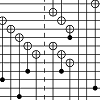 |
Fault-tolerant ancilla preparation and noise threshold lower bounds for the 23-qubit Golay code
A. Paetznick, B. Reichardt. Quantum Information & Computation 12:1034-1080, 2012, arXiv:1106.2190 [quant-ph].
In fault-tolerant quantum computing schemes, the overhead is often dominated by the cost of preparing codewords reliably. This cost generally increases quadratically with the block size of the underlying quantum error-correcting code. In consequence, large codes that are otherwise very efficient have found limited fault-tolerance applications. Fault-tolerant preparation circuits therefore are an important target for optimization.
|
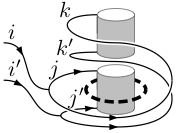 |
Quantum computation with Turaev-Viro codes
R. Koenig, G. Kuperberg, B. Reichardt. Annals of Physics 325(12):2707-2749, 2010, arXiv:1002.2816 [quant-ph] The Turaev-Viro invariant for a closed 3-manifold is defined as the contraction of a certain tensor network. The tensors correspond to tetrahedra in a triangulation of the manifold, with values determined by a fixed spherical category. For a manifold with boundary, the tensor network has free indices that can be associated to qudits, and its contraction gives the coefficients of a quantum error-correcting code. The code has local stabilizers determined by Levin and Wen. For example, applied to the genus-one handlebody using the Z_2 category, this construction yields the well-known toric code.
|
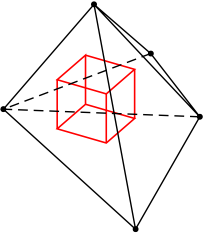 |
Error-detection-based quantum fault-tolerance threshold
B. Reichardt. Algorithmica 55(3):517-556, 2009. paper A major hurdle in building a quantum computer is overcoming noise, since quantum superpositions are fragile. Developed over the last couple of years, schemes for achieving fault tolerance based on error detection, rather than error correction, appear to tolerate as much as 3–6% noise per gate—an order of magnitude higher than previous procedures. However, proof techniques could not show that these promising fault-tolerance schemes tolerated any noise at all; the distribution of errors in the quantum state has correlations that conceivably could grow out of control.
|
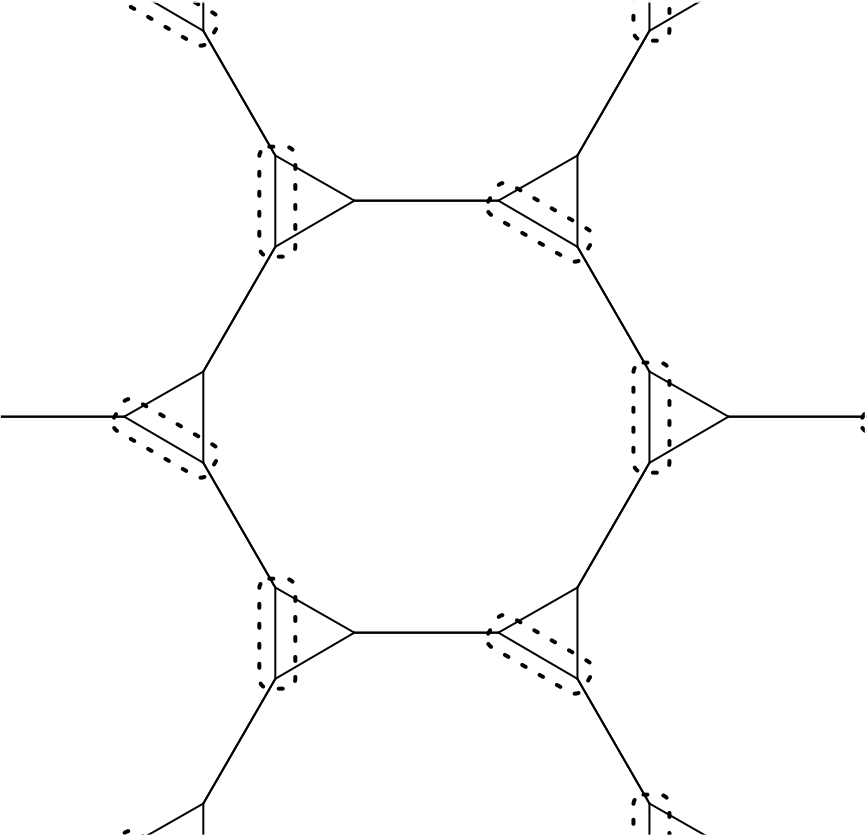 |
Exact entanglement renormalization for string-net models
R. Koenig, B. Reichardt, G. Vidal. Physical Review B 79:195123, 2009, 6 pages, paper, arXiv:0806.4583 [cond-mat.str-el] We construct an explicit renormalization group (RG) transformation for Levin and Wen's string-net models on a hexagonal lattice. The transformation leaves invariant the ground-state "fixed-point" wave function of the string-net condensed phase. Our construction also produces an exact representation of the wave function in terms of the multi-scale entanglement renormalization ansatz (MERA). This sets the stage for efficient numerical simulations of string-net models using MERA algorithms. It also provides an explicit quantum circuit to prepare the string-net ground-state wave function using a quantum computer. |
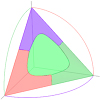 |
Quantum universality by state distillation
B. Reichardt. Quantum Inf. Comput. 9:1030-1052, 2009. arXiv:quant-ph/0608085, slides Quantum universality can be achieved using stabilizer operations and repeated preparation of certain ancilla states. Which ancilla states suffice for universality? We extend the range of single-qubit mixed states which are known to give universality, by using a simple parity-checking operation. Additionally, we display a two-qubit mixed state which is not a mixture of stabilizer states, but for which every postselected stabilizer reduction from two qubits to one outputs a mixture of stabilizer states. The main application of these techniques is to quantum fault tolerance. Our results imply that recent fault-tolerance threshold upper bounds based on the Gottesman-Knill theorem are tight. |
 |
Error-detection-based quantum fault tolerance against discrete Pauli noise
B. Reichardt. Ph.D. thesis, University of California, 2006. quant-ph/0612004
A quantum computer -- i.e., a computer capable of manipulating data in
quantum superposition -- would find applications including factoring,
quantum simulation and tests of basic quantum theory. Since quantum
superpositions are fragile, the major hurdle in building such a computer
is overcoming noise. |
Postselection threshold against biased noise.
B. Reichardt. Foundations of Computer Science (FOCS), 2006. quant-ph/0608018, slides |
Fault-tolerance threshold for a distance-three quantum code.
B. Reichardt. ICALP 2006, LNCS 4051. quant-ph/0509203, slides |
 |
Quantum error correction of systematic errors using a quantum search framework
B. Reichardt, L. Grover. Phys. Rev. A 72:042326, 2005. paper, quant-ph/0506242 Composite pulses are a quantum control technique for canceling out systematic control errors. We present a different composite pulse sequence inspired by quantum search. Our technique can correct a wider variety of systematic errors—including, for example, nonlinear over-rotational errors—than previous techniques. Concatenation of the pulse sequence can reduce a systematic error to an arbitrarily small level. |
Quantum universality from magic states distillation applied to CSS codes.
B. Reichardt. Quantum Inf. Proc. 4(3):251-264, 2005 paper quant-ph/0411036, 2004. slides |
Improved ancilla preparation scheme increases fault-tolerant threshold
B. Reichardt. quant-ph/0406025, 2004. |
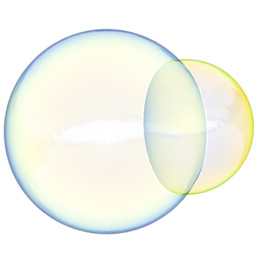 |
Proof of the Double Bubble Conjecture in Rn.
B. Reichardt. Journal of Geometric Analysis 18(1):172-191, 2008, paper, math.MG/0705.1601. slides The least-area hypersurface enclosing and separating two given volumes in Rn is the standard double bubble. |
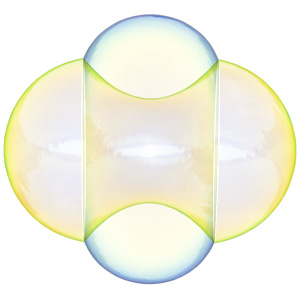
|
Proof of the double bubble conjecture in R4 and certain higher dimensional cases.
B. Reichardt, C. Heilmann, Y. Lai, A. Spielman. Pacific Journal of Mathematics 208(2):347-366, 2003. paper We prove that the standard double bubble is the minimizing double bubble in R4 and in certain higher dimensional cases, extending the recent work in R3 of Hutchings, Morgan, Ritoré and Ros. |
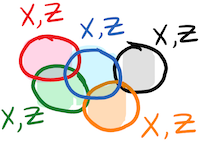 |
Overlapping qubits
R. Chao, B. Reichardt, C. Sutherland, T. Vidick. arXiv:1701.01062 [quant-ph], 2017.
An ideal system of n qubits has 2^n dimensions. This exponential grants power, but also hinders characterizing the system's state and dynamics. We study a new problem: the qubits in a physical system might not be independent. They can "overlap," in the sense that an operation on one qubit slightly affects the others.
|
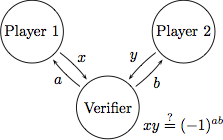 |
Test for a large amount of entanglement, using few measurements
R. Chao, B. Reichardt, C. Sutherland, T. Vidick. arXiv:1610.00771 [quant-ph], 2016.
Bell-inequality violations establish that two systems share some quantum entanglement. We give a simple test to certify that two systems share an asymptotically large amount of entanglement, n EPR states. The test is efficient: unlike earlier tests that play many games, in sequence or in parallel, our test requires only one or two CHSH games. One system is directed to play a CHSH game on a random specified qubit i, and the other is told to play games on qubits {i,j}, without knowing which index is i.
|
 |
Classical command of quantum systems
B. Reichardt, F. Unger, U. Vazirani. Nature 496:456-460, 2013. paper Long version: A classical leash for a quantum system: Command of quantum systems via rigidity of CHSH games, arXiv:1209.0448 [quant-ph], 2012. Quantum computation and cryptography both involve scenarios in which a user interacts with an imperfectly modelled or "untrusted" system. It is therefore of fundamental and practical interest to devise tests that reveal whether the system is behaving as instructed. In 1969, Clauser, Horne, Shimony and Holt proposed an experimental test that can be passed by a quantum-mechanical system but not by a system restricted to classical physics. Here we extend this test to enable the characterization of a large quantum system. We describe a scheme that can be used to determine the initial state and to classically command the system to evolve according to desired dynamics. The bipartite system is treated as two black boxes, with no assumptions about their inner workings except that they obey quantum physics. The scheme works even if the system is explicitly designed to undermine it; any misbehaviour is detected. Among its applications, our scheme makes it possible to test whether a claimed quantum computer is truly quantum. It also advances towards a goal of quantum cryptography: namely, the use of "untrusted" devices to establish a shared random key, with security based on the validity of quantum physics. |
On parallel composition of zero-knowledge proofs with black-box quantum simulators
R. Jain, A. Kolla, G. Midrijanis, B. Reichardt. Quantum Information and Computation 9:513-532, 2009, quant-ph/0607211.
Let L be a language decided by a constant-round quantum Arthur-Merlin (QAM) protocol with negligible soundness error and all but possibly the last message being classical. We prove that if this protocol is zero knowledge with a black-box, quantum simulator S, then L in BQP. Our result also applies to any language having a three-round quantum interactive proof (QIP), with all but possibly the last message being classical, with negligible soundness error and a black-box quantum simulator.
|
All-paths differential cryptanalysis of ideal Feistel and ideal Skipjack ciphers
B. Reichardt. Manuscript. |
Markov truncated differential cryptanalysis of Skipjack
B. Reichardt, D. Wagner. SAC 2002, LNCS 2595. paper, slides. |
Selected talks
| Title and Venue | Slides/Video | ||
| 2017 | Overlapping qubits Innovations in Theoretical CS (ITCS) 1/11/17 | video | |
| Tests for small quantum devices QuICS seminar, UMD 4/12/17 | |||
| Fault-tolerant quantum computation with few qubits IQI seminar, Caltech 5/30/17 | slides | ||
| 2015 | Classical command of quantum systems UC Riverside 1/26/15 | ||
| Overlapping qubits Quantum Hamiltonian Complexity Reunion workshop Simons Inst., UC Berkeley, 5/4/15 | slides | ||
| Fault tolerance tutorial Canadian Summer School on Quantum Information (CSSQI), U. Toronto, 8/12/15 | slides | ||
| 2014 | Quantum error correction tutorial
QUTE-Europe Summer School, Smolenice, Slovakia 8/22-8/24/14 | slides 1 slides 2 slides 3 | |
| Classical command of quantum systems Microsoft Research QuArC Workshop on Quantum Algorithms & Devices Redmond, WA 7/16/14 | |||
| 2013 | Classical command of quantum systems QCrypt 2013, Waterloo 8/7/13 | slides, video | |
| Classical command of quantum systems CIFAR Quantum Information Processing Meeting, Edmonton 2/19/13 | slides | ||
| Tests for quantum entanglement and dynamics Heilbronn Quantum Algorithms Day, University of Bristol 4/25/13 | slides | ||
| A classical leash for a quantum system Workshop on Quantum Hamiltonian Complexity, UC Berkeley 2/19/13 | slides | ||
| Classical command of quantum systems MHI EE Research Festival, USC 2/6/13 | slides | ||
| Classical command of quantum systems Quantum Information Processing (QIP) 2013, Tsinghua University, Beijing 1/21/13 | slides | ||
| A classical leash for a quantum system: Command of quantum systems via rigidity of CHSH games Innovations in Theoretical Computer Science (ITCS) 2013, UC Berkeley 1/11/13 | slides | ||
| 2012 | A classical leash for a quantum tiger: Key distribution with minimal assumptions IQI Seminar, Caltech 10/17/12 | ||
| The adversary bound, span programs, learning graphs and quantum algorithms QIS Workshop in Computer & Natural Sciences, U. Maryland 9/28/12 | slides | ||
| Quantum algorithm for deciding st-connectivity DIQIP-QCS Meeting, ICFO, Castelldefels, Spain 6/11/12 | |||
| A classical leash for a quantum tiger: Classical command of quantum systems via rigidity of CHSH games DIQIP-QCS Meeting, ICFO, Castelldefels, Spain 6/11/12 | slides | ||
| A classical leash for a quantum tiger: Classical command of quantum systems via rigidity of sequential CHSH games USC Quantum Information & Condensed Matter Seminar, USC 4/27/12 | |||
| Quantum algorithm for deciding st-connectivity Recent Progress in Quantum Algorithms, U. Waterloo & Perimeter Institute 4/11/12 | slides, video | ||
| 2011 | Key distribution with minimal assumptions UC Berkeley 11/7/11 | ||
| Query complexity of converting states Workshop on Quantum Computer Science, Montreal 10/7/11 | notes | ||
| Self-testing for sequential CHSH games Dagstuhl seminar on Quantum Cryptanalysis, Wadern, Germany 9/23/11 | notes | ||
| Span-program-based quantum algorithm for evaluating unbalanced formulas TQC 2011, Madrid 5/25/11 | slides | ||
| Optimal algorithms for quantum computers based on a norm Sandia National Labs, Albuquerque, NM 5/16/11 | |||
| How to compose quantum algorithms HRL Labs, Malibu 5/12/11 | |||
| Quantum computers: Algorithms and implementations USC, Los Angeles 3/21/11 | |||
| The query complexity of generating quantum states UC Berkeley 2/25/11 | |||
| Faster Quantum Algorithm for Evaluating Game Trees SODA 2011, San Francisco 1/23/11 | slides | ||
| Reflections for quantum query algorithms SODA 2011, San Francisco 1/23/11 | slides | ||
| Quantum query complexity QIP 2011 invited tutorial, Singapore 1/9/11 | slides | ||
| 2010 | A semi-definite program for quantum query complexity 2nd Barriers in Computational Complexity Workshop, Princeton 8/28/10 | video, slides & notes | |
| Span programs and optimal quantum query algorithms APS March Meeting 2010, Portland 3/15/10 | |||
| Equivalent quantum computer models, for algorithms and implementations NIST 2/17/10 | |||
| Span programs and quantum algorithms QIP 2010 invited talk 1/19/10 | video | ||
| 2009 | Span programs & quantum algorithms HRL Labs 12/10/09 | ||
| Faster quantum algorithm for evaluating game trees Caltech 11/17/09 | |||
| Span programs & quantum algorithms MIT 11/09/09 | |||
| Span programs and quantum query complexity: The general adversary bound is nearly tight for every boolean function FOCS 09 10/27/09 | video | ||
| Span programs and quantum query algorithms Institute for Advanced Study, Princeton 9/29/09 | video | ||
| Span programs and quantum query algorithms KITP, Santa Barbara 9/18/09 | video | ||
| Span programs and quantum query complexity Waterloo Combinatorics & Optimization Dept. Tutte seminar 8/14/09 | |||
| Quantum algorithms based on span programs: The general adversary bound is nearly tight for quantum query complexity CIFAR Quantum Information Processing Meeting 5/25/09 | |||
| Quantum algorithms based on span programs: The general adversary bound is nearly tight for quantum query complexity UNM Center for Advanced Studies Seminar 4/16/09 | slides | ||
| Semi-definite programs for span programs UC Berkeley quantum lunch seminar 3/6/09 | |||
| 2008 | Exact entanglement renormalization for string-net models IQC colloquium 10/6/08 | ||
| Span-program-based quantum algorithm for formula evaluation STOC 2008, Victoria, BC | |||
| Making quantum computers fault tolerant USC EE 4/9/08 | |||
| Making quantum computers fault tolerant UC Davis math colloqium 3/17/08 | slides | ||
| Research directions in quantum computing UC Berkeley BNNI 3/14/08 | |||
| Making quantum computers fault tolerant UC Berkeley BNNI 3/13/08 | |||
| Formula evaluation using a quantum computer, and Factories for quantum fault tolerance University of Waterloo 2/11/08 | |||
| Span-program-based quantum algorithm for evaluating formulas UC Berkeley 2/1/08 | |||
| Span-program-based quantum algorithm for formula evaluation QIP 2008 invited talk | slides | ||
| 2007 | Span program-based quantum algorithm for evaluating formulas NEC/Rutgers Quantum Computation Group seminar 10/25/07 | ||
| Quantum algorithm for evaluating span programs WQACT 2008, Singapore | |||
| Any AND-OR formula of size N can be evaluated in time N1/2+o(1) on a quantum computer FOCS 2007 | slides | ||
| Quantum algorithms for formula evaluation AQIS 2007 invited talk, Kyoto, Japan | slides | ||
| Proof of the Double Bubble Conjecture in Rn Mathfest 2007, San Jose | slides | ||
| ... | |||
| Any AND-OR formula of size N can be evaluated in time N1/2+o(1) on a quantum computer NEC Labs 7/07 | slides | ||
| Error-detection-based quantum fault tolerance Perimeter Institute FTQC 2 Workshop, Waterloo 6/07 | |||
| Error-detection-based quantum fault tolerance against discrete Pauli noise USC EE 5/31/07 | |||
| Universality by distillation QIP 2007, Brisbane, Australia | slides | ||
| 2006 | Postselection threshold against biased noise FOCS 2006, Berkeley | slides | |
| A probabilistic mixing lemma and quantum fault tolerance UC Berkeley Theory Lunch 9/13/06 | |||
| Fault-tolerance threshold for a distance-three quantum code ICALP 2006, Venice, Italy 7/10/06 | slides | ||
| Quantum fault tolerance against probabilistic Pauli noise UC Berkeley Theory seminar dissertation talk 5/15/06 | |||
| Techniques for fault-tolerant quantum error correction UC Berkeley quantum seminar 3/14/06 | |||
| Techniques for fault-tolerant quantum error correction NIST Boulder Workshop on Trapped Ion Quantum Computing 2006 | slides | ||
| Rigorous fault-tolerance thresholds QIP 2006 invited talk, Paris | slides | ||
| ... | |||
| 2005 | Fault-tolerance threshold for a distance-three quantum code CIAR QIP program meeting invited talk 12/8/05 | slides | |
| Threshold for the distance three Steane quantum code Caltech 10/05 | slides | ||
| Quantum universality from magic states distillation applied to CSS codes IQC, University of Waterloo 6/21/05 | slides | ||
| Quantum algorithms, complexity, and robustness DARPA Quantum Information Science and Technology (QuIST) program review, St Augustine, FL 4/05 | |||
| Improved "magic states" distillation for quantum universality Toronto Quantum Information Seminar 2/4/05 | slides | ||
| Fault-tolerant universality from fault-tolerant stabilizer operations and noisy ancillas ARDA program review invited talk, Bell Labs 1/20/05 | slides | ||
| 2004 | Recent schemes for increasing the fault-tolerance threshold Bay Area Theory Symposium, Berkeley 12/10/04 | slides | |
| Improved magic states distillation for quantum universality Quantum computing seminar, UC Berkeley 9/28/04 | |||
| Recent schemes for increasing the fault-tolerance threshold Banff International Research Station Workshop on Quantum Computation and Information Theory 9/25/04 | notes | ||
| 2002 | Markov truncated differential cryptanalysis of Skipjack Selected Areas in Cryptography (SAC) 2002, St. John's, Newfoundland 8/15/02 | slides |
